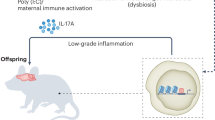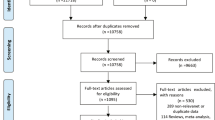Abstract
Objective:
Close contact of mother and child in the first hours after birth is essential for the establishment of a secure attachment behavior in term infants. To date, studies investigating whether a ‘sensitive period’ also exists for very low birth weight (VLBW) preterm infants are lacking.
Study Design:
Attachment patterns of 62 VLBW infants were assessed using the ‘strange situation’ setting and correlated with the time mothers saw their child for the first time. Furthermore, maternal and infant covariates possibly influencing the attachment behavior were analyzed. As maternal factors the mother's age, social status and pregnancy history were recorded and at three time points (time 1, 2 and 3 (t-1, t-2 and t-3)), a semi-structured interview, a depression and a social support questionnaire were performed. As infant factors neonatal basic data, ventilation time and length of hospital stay were recorded. Disease severity was scored using the clinical risk index for babies, score for neonatal acute physiology (SNAP), SNAP perinatal extension and nursery neurobiological risk score. At time points t-2 and t-3, the infants were examined using the second edition of Bayley scales of infant development.
Results:
In all, 53.2% of the children showed a secure, 33.9% an insecure-avoidant, 3.2% an insecure-ambivalent and 9.7% an insecure-disorganized attachment behavior. Preterm infants whose mothers had seen them within 3 h after birth had a higher rate of secure attachment than preterm infants with no early contact (76 versus 41%, P=0.009). Firstborns showed a significantly higher rate of insecure attachment behavior (93 versus 67%, P=0.01). No influence on attachment behavior was shown for any other maternal or infant factor.
Conclusions:
Our results support the hypothesis that the first hours after birth are a ‘sensitive period’ for the development of attachment behavior in VLBW infants. When a mother is enabled to see her infant shortly after birth, the ‘sensitive period’ right after birth may be used to help forming an important basis for the secure attachment of the preterm infant.
This is a preview of subscription content, access via your institution
Access options
Subscribe to this journal
Receive 12 print issues and online access
$259.00 per year
only $21.58 per issue
Buy this article
- Purchase on Springer Link
- Instant access to full article PDF
Prices may be subject to local taxes which are calculated during checkout
Similar content being viewed by others
References
Bowlby J . The nature of the child's tie to his mother. Int J Psychoanal 1958; 39: 350–373.
Klaus M, Jarauld R, Kreger N, McAlpine W, Steffa M, Kennell JH . Maternal attachment: importance of the first postpartum days. New Engl J Med 1972; 286: 460–463.
Winnicott DW . Collected Papers: Through Pediatrics to Psychoanalysis. New York Basic Books: New York, 1956.
Christensson K, Siles C, Morena L, Belaustequi A, De la Fuente PH et al. Temperature, metabolic adaptation and crying in healthy full-term newborns cared for skin-to-skin or in a cot. Acta Paediatr 1992; 81: 488–493.
Uvnäs-Moberg K . Role of efferent and afferent vagal nerve activity during reproduction: Integrating function of oxytocin on metabolism and behavior. Psychoneuroendocrinol 1994; 19: 687–695.
Christensson K, Cabrera T, Christensson E, Unäs-Moberg K, Winberg J . Separation distress call in the human neonate in the absence of maternal body contact. Acta Paediatr 1995; 84: 468–473.
Liu D, Diorio J, Tannenbaum B, Caldji C, Francis D, Freedman A et al. Maternal care, hippocampal glucocorticoid receptors, and hypothalamic-pituitary-adrenal responses to stress. Science. 1997; 277: 1659–1662.
Holst S, Lund I, Uvnas-Moberg K, Petersson M . Postnatal oxytocin treatment and postnatal stroking of rats reduce blood pressure in adulthood. Auton Neurosci 2002; 99: 85–90.
Kennell JH, Klaus MH . Bonding: recent observations that alter perinatal care. Pediatr Rev 1998; 19: 4–12.
O’Connor S, Vietze PM, Sherrod KB, Sandler HM, Altemeier WA . Reduced incidence of parenting inadequacy following rooming in. Pediatrics. 1980; 66: 176–182.
Ainsworth MDS, Wittig BA . Attachment and exploratory behavior of one-year-olds in a strange situation. In B.M. Foss (Ed.) Determinants of Infant Behavior. Methuen: London, 1969.
Main M, Salomon J . Discovery of an insecure-disorganized/disoriented attachment pattern. In TB Brazelton and MW Yogman (Eds.). Affective Development of Infancy (pp 95–124 ) Ablex: Norwood; NJ, 1986.
Cockburn F, Cooke RWI, Gamsu HR, Greenough A, Hopkins A, McIntosh N, et al. The CRIB (clinical risk index for babies) score: a tool for assessing initial neonatal risk and comparing performance of neonatal intensive care units. Lancet 1993; 342: 193–198.
Richardson DK, Corcoran JD, Escobar GJ, Lee SK . SNAP-II and SNAPPE-II: simplified newborn illness severity and mortality risk scores. J Pediatr 2001; 138: 92–100.
Brazy JE, Eckerman CO, Oehler JM, Goldstein RF, O'Rand AM . Nursery neurobiologic risk score: important factors in predicting outcome in very low birth weight infants. J Pediatr 1991; 118: 783–792.
Bayley N . Manual for the Bayley Scales of Infant Development 2nd edn. The Psychological Cooperation: San Antonio, TX, 1993.
Meyer EC, Zeanah CH, Boukydis CFZ, Lester BM . A clinical interview for parents of high-risk infants. Infant Ment Health J 1993; 14: 192–205.
Hautzinger M, Bailer M . ADS Allgemeine Depressions Skala. Beltz: Weinheim, 1993.
Fydrich T, Sommer G, Menzel U, Höll B . Fragebogen zur sozialen unterstützung (Kurzform, SOZU-K-22). Kurzbericht. Z Klin Psychol 1987; 16: 434–436.
Bystrova K, Ivanova V, Edhborg M, Mathiesen AS, Ransjö-Arvidson AB, Mukhamedrakhimov R et al. Early contact versus separation: effects on mother-infant interaction one year later. Birth 2009; 36: 97–109.
Anisfeld E, Lipper E . Early contact, social support, and mother-infant bonding. Pediatrics 1983; 72 (1): 79–83.
Brisch KH, Bechinger D, Betzler S, Heinemann H . Early preventive attachment-orientated psychotherapeutic intervention program with parents of a very low birthweight premature infant: results of attachment and neurologic development. Attach Hum Dev 2003; 5: 120–135.
Pohlmann J, Fiese B . The interaction of maternal and infant vulnerabilities on developing attachment relationships. Dev Psychopathol 2001; 13: 1–11.
Brown JV, Bakeman R . Relationships of human mothers with their infants during the first year of life: Effect of prematurity. In RW Bell & RP Smotherman (Eds.) Maternal Influence and Early Behavior (pp. 353–375 ) MTP: Lancaster, PA, 1980.
Frodi A, Thompson R . Infants affective responses in the strange situation: effects of prematurity and quality of attachment. Child Dev 1985; 56: 1280–1290.
Plunkett J, Meisels S, Stiefel G, Pasick P, Roloff D . Patterns of attachment among preterm infants of varying biological risk. JAACAP 1986; 25: 794–800.
Rode SS, Chang PN, Fisch RO, Sroufe LA . Attachment patterns of infants separated at birth. Dev Psychol 1981; 17: 188–191.
Eaterbrooks MA . Quality of attachment to mother and to father: effects of perinatal risk status. Child Dev 1989; 60: 825–830.
Ijzendoorn M, Goldberg S, Kroonenberg PM, Frenkel OJ . The relative Effect of maternal and child problems on the quality of attachment: a meta-analysis of attachment in clinical samples. Child Dev 1992; 63: 840–858.
Shapiro T, Sherman M, Calimari G, Koch D . Attachment in autism and other developmental disorders. JAACAP 1987; 26: 480–484.
Lederberg AR, Mobley CE . The effect of hearing impairment on the quality of attachment and mother-toddler interaction. Child Dev 1990; 61: 1596–1604.
Figueiredo B, Costa R, Pacheco A, Pais I . Mother-to-infant emotional involvement at birth. Matern Child Health J 2009; 13: 539–549.
Korja R, Savonlahti E, Haataja L, Lapinleimu H, Manninen H, Piha J, et al. Attachment representations in mothers of preterm infants. Inf Behav Dev 2009; 32: 305–311.
Borghini A, Pierrehumbert B, Miljkovitch R, Müller-Nix C, Forcada-Guex M, Ansermet F . Mothers attachment representations of their premature infant at 6 and 18 months after birth. Infant Ment Health J 2006; 27: 494–508.
Forcada-Guex M, Pierrehumbert B, Borghini A, Moessinger A, Muller-Nix C . Early dyadic patterns of mother-infant interactions and outcomes of prematurity at 18 months. Pediatrics 2006; 118: e107–e114.
Muller-Nix C, Forcade-Guex M, Pierrehumbert B, Jaunin L, Borghini A, Ansermet F . Prematurity, maternal stress and mother-child interactions. Early Human Dev 2004; 79: 145–158.
Feldman R, Weller A, Leckman JF, Kuint J, Eidelman AI . The nature of the mother's tie to her infant: maternal bonding under conditions of proximity, separation and potential loss. J Child Psychol Psychiatr 1999; 40: 929–939.
Sajaniemi NEA . Cognitive performance and attachment patterns at four years of age in extremely low birthweight infants after early intervention. Eur Child Adolesc Psychiatr 2001; 10: 122–129.
Laucht M, Esser G, Schmidt MH . Differential development of infants at risk for psychopathology: the moderating role of early maternal responsivity. Dev Med Child Neurol 2001; 43: 292–300.
Kissgen R, Krischer M, Kummetat V, Spiess R, Schleiffer R, Sevecke K . Attachment representation in mothers of children with attention deficit hyperactivity disorder. Psychopathol 2009; 42: 201–208.
Author information
Authors and Affiliations
Corresponding author
Ethics declarations
Competing interests
The authors declare no conflict of interests
Rights and permissions
About this article
Cite this article
Mehler, K., Wendrich, D., Kissgen, R. et al. Mothers seeing their VLBW infants within 3 h after birth are more likely to establish a secure attachment behavior: evidence of a sensitive period with preterm infants?. J Perinatol 31, 404–410 (2011). https://doi.org/10.1038/jp.2010.139
Received:
Accepted:
Published:
Issue Date:
DOI: https://doi.org/10.1038/jp.2010.139
Keywords
This article is cited by
-
Separation in Unity: Dialogical Transformation of Maternal Bond
Integrative Psychological and Behavioral Science (2023)
-
Care of hospitalized infants and their families during the COVID-19 pandemic: an international survey
Journal of Perinatology (2021)
-
Exploring Perinatal Indicators of Infant Social-Emotional Development: A Review of the Replicated Evidence
Clinical Child and Family Psychology Review (2021)
-
Hautkontakt von Frühgeborenen im Kreißsaal
Monatsschrift Kinderheilkunde (2019)
-
Trauma-informed care in the newborn intensive care unit: promoting safety, security and connectedness
Journal of Perinatology (2018)



